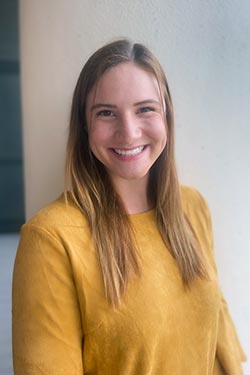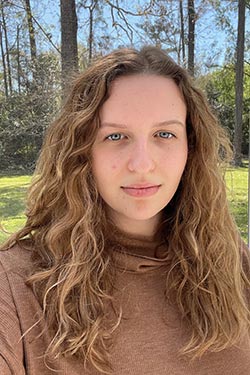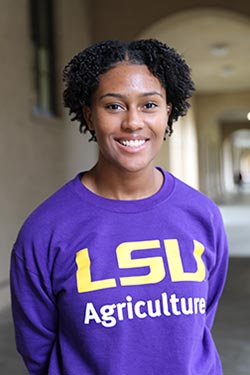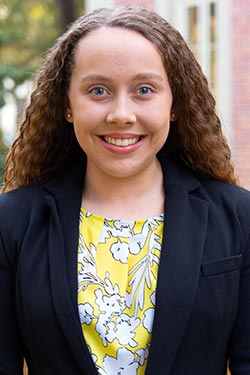2022 UROP Projects Announced
This year the Louisiana Sea Grant College Program (LSG) is funding eight Undergraduate Research Opportunities Program (UROP) projects. Established in 1992 to provide talented undergraduate students with hands-on research experience, LSG has funded more than 200 UROP projects.
Each UROP student will gain first-hand knowledge regarding the whole research process from design, implementation, analysis to conclusion. The hope is for students to present at relevant conferences and publish in peer-reviewed scientific journals.
Projects receive funding up to $3,000. UROP applications are accepted each fall for projects starting the following March. Full-time undergraduate students at all Louisiana colleges and universities are eligible.
 James Anderson, Louisiana State University (LSU)
James Anderson, Louisiana State University (LSU)
Advisor: John White
Determining the Sediment Nutrient Role in Driving Harmful Algal Blooms in the Lake Pontchartrain Estuary
Mississippi River diversions from the Bonnet Carré Spillway are intended to protect downstream communities from river flooding. But doing so delivers both soluble and particulate phosphorus into the Lake Pontchartrain estuary, which in-turn can result in harmful algal blooms. Recent operations of the spillway have left behind a significant pool of phosphorus in the sediments (sediment pools), which can later be released back into the water column. This research will determine how much phosphorus is coming from the sediments versus how much phosphorus is coming in from the watershed. This research will give resources managers a phosphorus budget for the estuary so that the most effective strategies can be implemented to reduce phosphorus-induced harmful algal blooms and restore water quality, protecting fisheries and human health.
Julie Armand and Elizabeth Reich, LSU

Advisor: Todd Monroe
A 3-D Printed Microfluidic Chip Supporting Preservation of Eastern Oyster Genetic Resources
The Eastern oyster (Crassostrea virginica) is a popular aquaculture species in Louisiana, supporting about 4,000 jobs and bringing in millions of dollars annual to the state’s economy. However, recent concerns about dangerously low Gulf of Mexico oyster populations have been reported in the media. The goal of this project is to develop a low-cost, 3D-printed microdevice to evaluate Eastern oyster sperm for genetic preservation programs, such as cryopreservation. The device would allow for the efficient identification of high-quality sperm through the sperm’s ability to pass through obstacles in a sort of sperm Olympics. Ultimately, the device could help enhance Louisiana oyster stocks used by aquaculturists, hatchery managers, state agencies and researchers.
 Jillian Bowman, LSU
Jillian Bowman, LSU
Advisor: Stephanie Archer, Louisiana Universities Marine Consortium
Identifying Acoustic Indices of Oyster Reef Health
Healthy oyster reefs are an essential component of the ecology, economy and culture of Southeast Louisiana – stabilizing shorelines, improving water quality and acting as nursery grounds for other ecologically and economically important species. Current methods to monitor reef health and the effectiveness of reef restoration efforts are time and labor intensive. One novel, possibly easier, approach for monitoring ecosystem health is passive acoustics. This project will identify acoustic indices – essentially soundscapes – that correlate with reef health and reef-associated biodiversity.
Patrick Colclough, LSU
Advisor: John Nyman
Comparing Soils and Invertebrate Communities between Created and Natural Marshes
Soils and invertebrates provide the foundation of an ecosystem’s health. In coastal Louisiana, this means worms and insects provide food for sandpipers, rails, egrets, etc. This research will compare soils and invertebrate communities from created and natural marshes to determine if man-made sites function similarly to natural marshes regarding soil organic content and density, as well as invertebrate population densities. It is critical that created marshes function similarly to natural marshes if they are to be effective, and this project could help inform the design of future man-made marshes.
 Jerica A. Ledet-Medellin, LSU
Jerica A. Ledet-Medellin, LSU
Advisor: Evelyn Gutierrez-Watts
The Antimicrobial Effectiveness of Gelatin Film Containing Grapefruit Essential Oil for Preservation of Blue Catfish (Ictalurus furcatus)
The geographic market for fresh seafood is limited due to the product’s high perishability. But innovative methods to increase shelf life could allow processors to reach regional and national markets. This project will determine whether gelatin edible film combined with grapefruit essential oils extends the shelf life of fresh catfish.
Jonathan Sanders, LSU
Advisor: Fernando Galvez
 Creation of Three-dimensional Printed Models of Gulf Killifish for the Educational Outreach Describing the Long-term Impacts of Oil Pollution
Creation of Three-dimensional Printed Models of Gulf Killifish for the Educational Outreach Describing the Long-term Impacts of Oil Pollution
Marine oil spills are common in the northern Gulf of Mexico (GOM) and continually stress Louisiana fisheries. In previous research, the Galvez lab assessed the generational effects of non-lethal crude oil exposure on GOM killifish, an important estuarine species native to coastal Louisiana. Findings indicated that offspring from oiled fathers and grandfathers had significant anatomical abnormalities. Sanders will use computed tomography (CT) data from that previous research to produce three-dimensional (3D) printed models of whole fish, crania and the spinal cords of oiled GOM killifish offspring. The models will be used as part of the lab’s outreach efforts targeting middle schoolers, high schoolers, science fairs and possibly students at the Louisiana School for the Visually Impaired.
 Bridget Seghers, LSU
Bridget Seghers, LSU
Advisor: Michael Polito
Co-Advisor: Stephanie Archer
Developing an Invasive Carp-Based Aquaculture Feed to Benefit Louisiana Ecosystems and Economies
Increased commercial harvest of invasive carp – such as silver carp, bighead carp, black carp and grass carp – is the most effective way to limit their impacts on native fisheries. However, low demand and low dockside prices for invasive carp have limited the scope and size of commercial harvests. This project will determine if the quality of invasive carp harvested in Louisiana is a good source for aquaculture feed and serve as a first step for feeding trails with channel catfish.
Student to be determined, Southeastern University
Advisor: Kyle Piller
Assessing Fish Diversity Associated with Living Shoreline Reefs in Calcasieu Lake
Living shoreline projects use natural materials and hard structures to stabilize coastal habitats, reducing erosion and the risk of coastal flooding. Three such living shorelines have been constructed, or are planned to be constructed, in Calcasieu Lake. But relatively little species diversity information has been gathered from any of these projects. As part of this research, environmental DNA – derived from scales, mucous, feces and urine – will be collected to determine what fish species populate the living shorelines. Researchers anticipate more fish species to be present at the living shoreline, compared to natural reefs that will be used as control sites, due to the availability of structured habitat.
